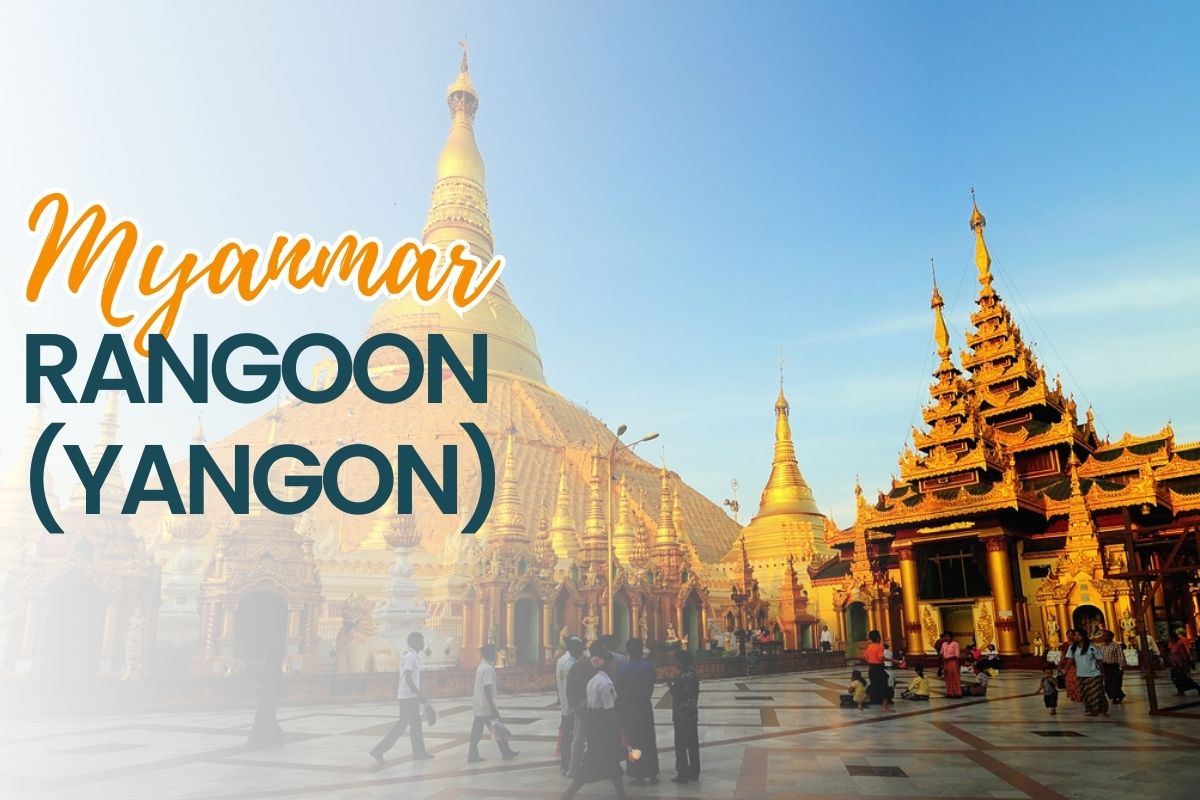Rangoon (Yangon) – The Enchanting City of Myanmar

Rangoon, or Yangon, is Myanmar’s largest and capital city. A city with a rich cultural heritage, colonial buildings, thriving markets, and serene pagodas, Rangoon is one city that comfortably blends the past with the present. This attractive city has been at the very heart of Myanmar’s history, culture, and spirituality.
Historical Significance
Rangoon Yangon’s past goes back to the early 11th century when it was established as Dagon, a fishing village with a cluster of pagodas around the Shwedagon Pagoda. The city became significant in the mid-18th century when King Alaungpaya captured Dagon and renamed it Yangon, which means “End of Strife.” Under British colonial rule, Yangon was developed into an important port city and was the capital of British Burma from 1852 to the independence of Myanmar in 1948.
Architectural Wonders
Yangon is famous for its intact colonial architecture. Taking a stroll through downtown Yangon’s streets, one gets to appreciate the grand colonial structures that tell of the city’s past. Such iconic landmarks are the Yangon City Hall, the Strand Hotel, and the High Court Building. The integration of British colonial style with local Burmese design elements provides a distinct and captivating cityscape.
Also, Visit – Best Places to Visit in Portugal
The Shwedagon Pagoda
The Shwedagon Pagoda, or Golden Pagoda, is the most symbolic landmark in Yangon. Gold leaf-covered, this 99-meter-tall stupa boasts hundreds of precious gems and diamonds. This sacred place of Buddhism is supposed to hold four Buddhas’ ashes. Pilgrims and visitors flock there to absorb the religious atmosphere and spotless scenery of the Shwedagon Pagoda.
Cultural Attractions
Rangoon Yangon is a cultural melting pot with various communities adding to its rich cultural landscape. The city’s vibrant markets, including Bogyoke Aung San Market, provide a glimpse into local life with a variety of traditional crafts, textiles, and street food. The country’s history and art culture are displayed at the National Museum of Myanmar and the Yangon Gallery. Also, the celebrations of the city like the Thingyan Water Festival and the Tazaungdaing Festival of Lights are culturally enriching events.
Natural Beauty
Even though it is a busy city, Yangon is dotted with beautiful greenery and peaceful lakes. Kandawgyi Lake and Inya Lake are where one must unwind and enjoy. People’s Park and Mahabandoola Garden, the parks of the city, provide relief from city mayhem. Rangoon Yangon’s beauty is proof of its harmony with nature.
Culinary Delights
Rangoon Yangon’s cuisine is a delectable mix of Burmese, Chinese, Indian, and Thai influences. The city’s roadside food stalls and restaurants offer a range of tasty food from Myanmar traditional curries to noodle soups with a lot of meat. The mohinga (fish and rice noodle soup), laphet thoke (fermented tea leaf salad), and samosas are the must-taste local dishes. Yangon’s cuisine reflects its variety and richness of culinary legacy.
Financial and Business Center
Apart from a cultural and historical centre, Rangoon Yangon is the main commercial and economic centre of the country. Yangon Port, the largest port in Myanmar, is located in Rangoon Yangon and is the main point of foreign trade in the country. The city’s busy business districts, the Central Business District (CBD) and the Industrial Zones are a driving force in Myanmar’s economy. The growth of the infrastructure of the city and the economy has attracted both foreign and domestic investments.
Conclusion
Rangoon Yangon is a city that charms the heart of every visitor with its historic charm, architectural magnificence, cultural vibrancy, and natural splendour. Yangon is a shining example of Myanmar’s heritage and resilience despite the country continually opening its doors to the world. Yangon offers a unique and satisfying experience that will leave you speechless, whatever your interests—history, culture, or planet-roaming.






